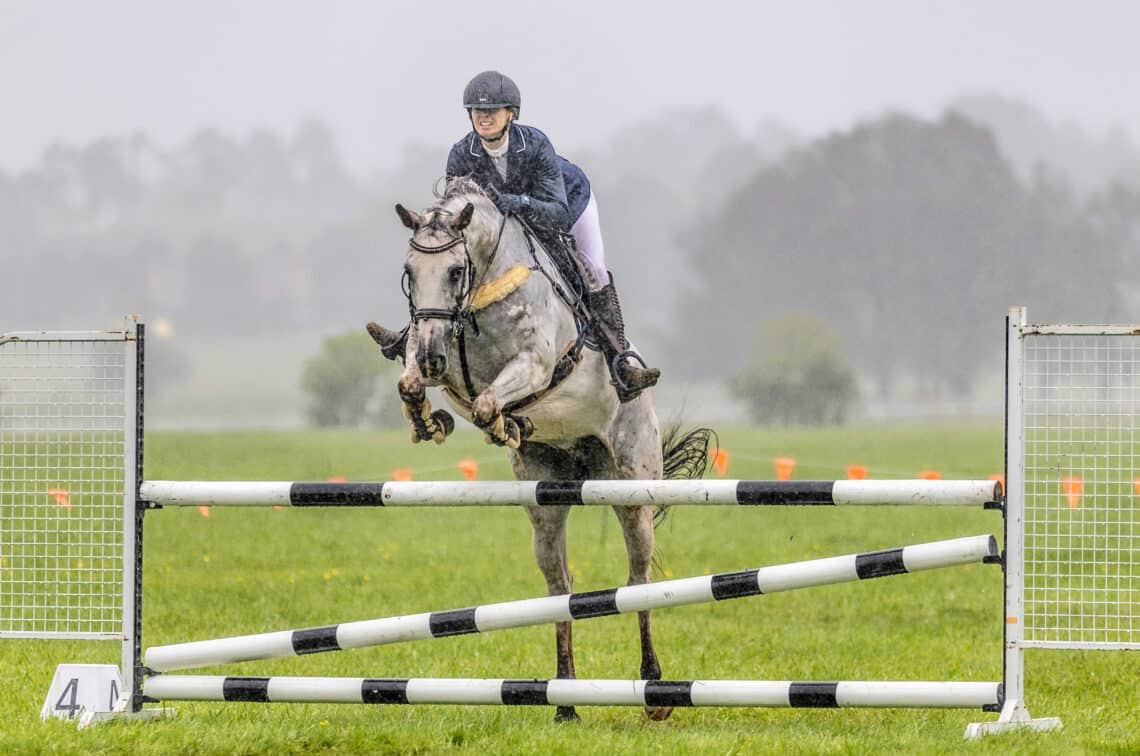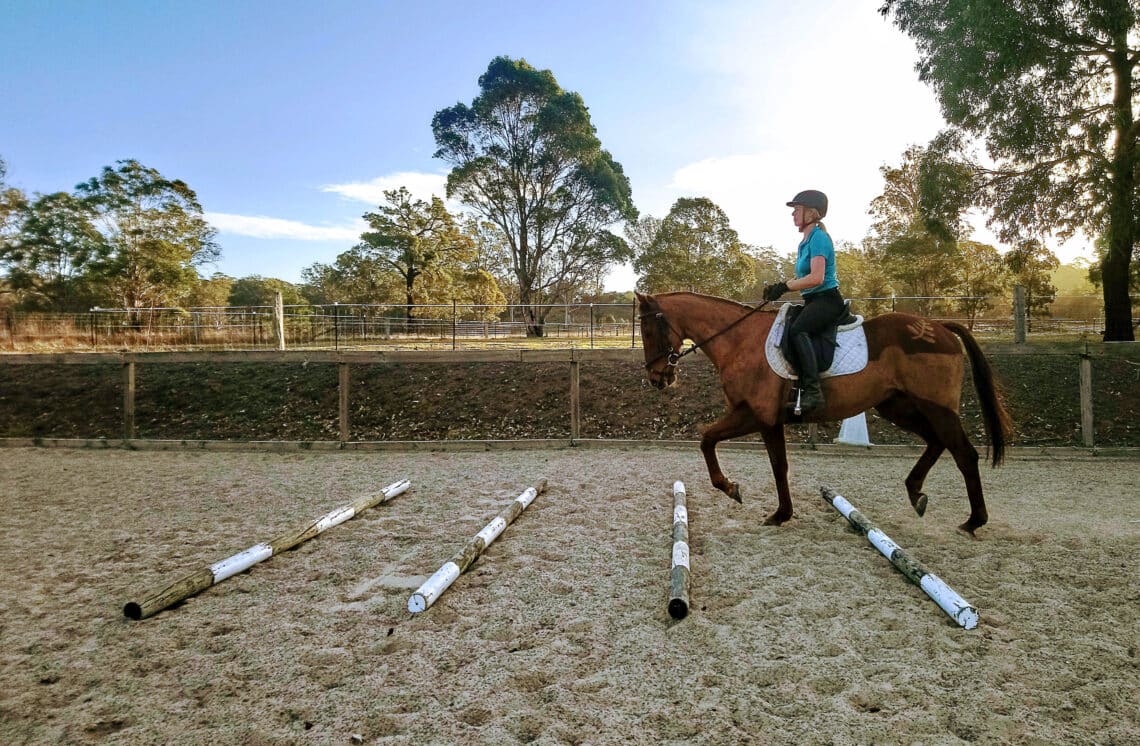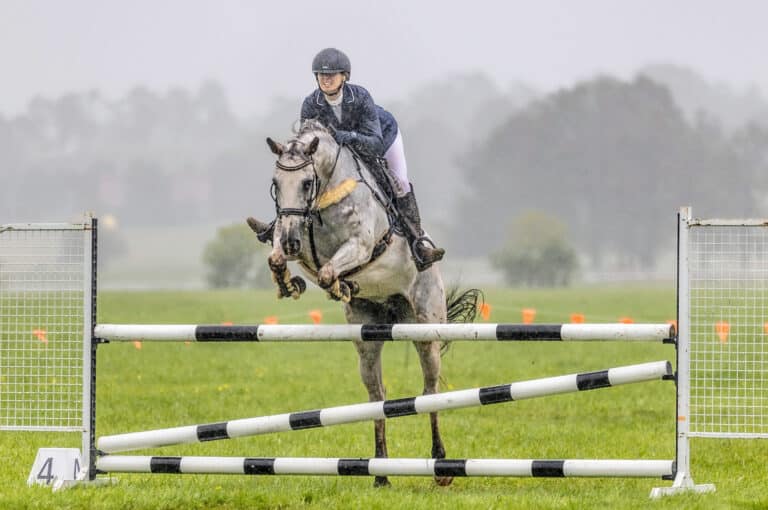
Five ways polework helps you jump better
Did you know you can improve your jumping without actually leaving the ground? CHRISTINE ARMISHAW explains.
To improve your horse’s jumping, without actually jumping, you simply can’t look past the ongoing benefits of poles.
1) Straightness: Being straight means getting from point A to B without getting wiggly and wavering off a predetermined line. You want your horse’s hindquarters to directly follow their shoulders, both on straight lines and on curving lines too. This is one of the key elements to arriving correctly at the front of every fence on course. Plus, if your horse is not straight while in the air over a jump, they’re more likely to take rails as they go.
Set up pole exercises on both fixed lines and circles and incorporate these into your regular rides. Aiming for the middle of every pole every time will help you ride more accurately.
2) Adjustability: This is all about making the horse’s canter stride bigger and smaller. This can help you to cover ground over open stretches on a course, and also to gather your horse together to prepare to jump a big vertical. When you put your leg on, you want your horse to go, but when you ask your horse to collect or steady up, you don’t want them to fall back into a trot, but rather to canter on a smaller stride.
A simple but very effective pole exercise to make your horse’s stride more adjustable for jumping uses only two poles. Start by setting up your two poles at about six average strides apart (to give you an idea of what to pace out, a stride is roughly nine heel-to-toe human steps). Once you have established your base level of six strides, ask for a bigger canter so they cover the distance in five strides. When you can do that, shorten the stride so they cover the same distance in seven strides.
You’ll normally find your horse is better at either increasing or decreasing their stride, so you need to spend more time working on the one that doesn’t come to them as naturally and easily as the other.

Riding over poles on the ground offers you the opportunity to get your eye in and ultimately to make it easier to ride to a fence. Your horse begins to think about where they’re putting their feet and when, all of which is great foundation training for building brave and capable horses and riders.
Interestingly, some riders find riding to a pole with accuracy to be more challenging than riding to an actual fence, but if you can nail the polework, the jumping starts to become easier.
4) Low impact: Unlike jumping, polework can be done every day. Pole exercises help improve your horse’s timing, strength and balance, all of which aid in improving overall jumping technique and skill without the impact on the horse’s legs that occurs when they are jumping. There’s an old saying that a horse has only so many jumps in them in a lifetime, but we don’t know what that number is! Saving their legs from repetitive impact while continuing to train and improve will hopefully see you and your horse get many happy jumping years together.
5) Rider position: Mastering a correct two-point riding position is paramount while jumping because that’s how you’ll stay in balance when you’re going over a fence. Practising over poles is a safe and easy way to get lots of practise in, for newcomers and more advanced riders alike.
Starting off by riding in two-point during trot and then progressing to canter over poles is fundamental to developing a strong and balanced jumping position. You may notice your horse’s stride becomes extra bouncy or exuberant over the poles. You want to know that before jumping raised obstacles, you can handle any of those changes and stay in balance without getting left behind and pulling on your horse’s mouth.
The beauty of polework is that it affords you the opportunity of repetition while you build leg and core strength and create muscle-memory.
Christine Armishaw Equestrian offers a variety of coaching and other equestrian services at her Otford Valley Equestrian Agistment & Training Centre just south of Sydney, NSW.
Don’t miss next month’s Top Tips, when Christine dives deep into rider position.



